| Alsace 1940:
Publisher’s Preview
By Mike Bennighof, Ph.D.
March 2022
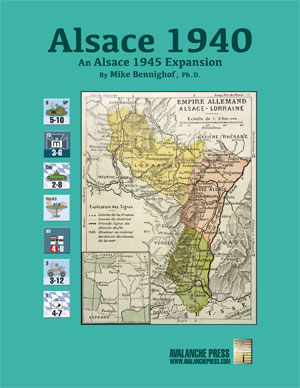 After the intense work that goes into preparing a game for publication, even one I didn’t design, it’s usually a good long while before I can bring myself to actually play it for fun. It took roughly 10 years for Alsace 1945. After the intense work that goes into preparing a game for publication, even one I didn’t design, it’s usually a good long while before I can bring myself to actually play it for fun. It took roughly 10 years for Alsace 1945.
While there are no “weekends” in a small business, we do run repeated Daily Content on most Saturdays and Sundays and a while back one of these concerned Alsace 1945. That provoked an incoherent blast of rage from one reader, who wanted new Content about his favorite game instead because “no one cares about Alsace 1945.” Being both contrary and stubborn, I became determined to write some fresh Content for poor Alsace 1945, and broke out the game to re-familiarize myself with it.
It’s a fun little game, and I wrote a publisher’s overview for it and a new scenario. I thought it really needed some more clash-of-equals scenarios; the 1945 ones are kind of lopsided, first in favor of the Germans, then for the Americans. The final one I added (Operation Undertone) consists of the Americans crushing weak German units, while the German player tries to get wiped out somewhat later than happened to his or her historical counterpart.
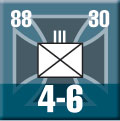 There’s nothing wrong with that type of scenario; wargames by necessity are full of them, since no competent general wants a “fair fight.” But I wanted to add a few more scenarios, either in Daily Content or in our Golden Journal, and decided to look at the 1940 campaign in Alsace. I wanted to write a 1940 scenario, especially since a Polish infantry division fought in the battle for Alsace in 1940, but the schwerpunkt of the German attack was just off the upper left edge of the Alsace 1945 map. I couldn’t craft a 1940 scenario without making stuff up. So if I was going to have to make stuff up, I decided to make it all up. And that’s the genesis of Alsace 1940. There’s nothing wrong with that type of scenario; wargames by necessity are full of them, since no competent general wants a “fair fight.” But I wanted to add a few more scenarios, either in Daily Content or in our Golden Journal, and decided to look at the 1940 campaign in Alsace. I wanted to write a 1940 scenario, especially since a Polish infantry division fought in the battle for Alsace in 1940, but the schwerpunkt of the German attack was just off the upper left edge of the Alsace 1945 map. I couldn’t craft a 1940 scenario without making stuff up. So if I was going to have to make stuff up, I decided to make it all up. And that’s the genesis of Alsace 1940.
Alsace 1940 shares the same setting as our Second Great War alternative history books for Second World War at Sea. In that history that never was, American President Woodrow Wilson’s failed attempt to broker a negotiated peace in December 1916 is successful. Fighting winds down at year’s end and by mid-1917 the peace treaties have been signed. No one is completely satisfied, and as the years go on French, Russian and Italian leaders blame the treaties for all of their nations’ ills, whether real or imagined.
France’s war of revenge opens in September 1940, with the Third Army trained and equipped to execute the theories of armored warfare laid down by Col. Charles de Gaulle. The French have strong infantry, but their real striking power is in the corps of two heavy armored divisions and one mechanized division. Defending Alsace is the Bavarian First Army, with strong infantry and a little armor support, plus some fortifications.
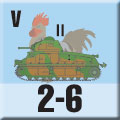 Strasbourg is the goal, and the French attack from west to east, finally making use of that bottom left corner of the Alsace 1945 map. The historical scenarios in the original boxed game are kind of limited in geographical scope; by the time you get to the top or bottom third of the map (depending on whether it’s a German or American offensive under way in the scenario being played) the game’s pretty much been decided. The map’s not all that large (22x17 inches, including some charts along the right-hand side) and I wanted to get all of it into play. Strasbourg is the goal, and the French attack from west to east, finally making use of that bottom left corner of the Alsace 1945 map. The historical scenarios in the original boxed game are kind of limited in geographical scope; by the time you get to the top or bottom third of the map (depending on whether it’s a German or American offensive under way in the scenario being played) the game’s pretty much been decided. The map’s not all that large (22x17 inches, including some charts along the right-hand side) and I wanted to get all of it into play.
Alsace 1945 is a regimental-level game, with a few tank battalions thrown in, and the 1940 version follows that as well. Divisions are made up of three or four component units, and get game benefits for operating together. Corps headquarters in turn hand out supply and support, keeping the divisions in range for maximum efficiency. It’s a very simple system that keeps players operating their units just like real generals for very similar reasons, but without complicated rules forcing them to do so. You can always send your regiments wandering off individually all over the map; they just won’t fight as well.
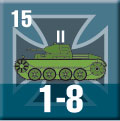 The divisions of 1940 are still on their peacetime tables of organization, before the inevitable exigencies of war cause regiments and battalions to be attached, detached, destroyed and replaced. That makes it pretty easy to keep track of what regiments belong to each division: infantry divisions of both sides have three regiments each. The French heavy armored divisions have two tank regiments and two more of motorized infantry; all sides entered the real World War II with tank-heavy armored divisions, so the planners of this alternate reality lean that way, too. The divisions of 1940 are still on their peacetime tables of organization, before the inevitable exigencies of war cause regiments and battalions to be attached, detached, destroyed and replaced. That makes it pretty easy to keep track of what regiments belong to each division: infantry divisions of both sides have three regiments each. The French heavy armored divisions have two tank regiments and two more of motorized infantry; all sides entered the real World War II with tank-heavy armored divisions, so the planners of this alternate reality lean that way, too.
The French are strong, and can back their assault with a generous allotment of air power. They are very mobile, and have plenty of headquarters to keep their offensive moving. Along with their armored divisions, they also have tank battalions dedicated to infantry support. The French aim to take Alsace and keep it.
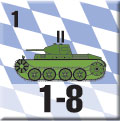 Defending Alsace is the First Bavarian Army; I went with a Bavarian formation because I liked the Lowenbrau blue-lozenge pattern, and figured that a Bavarian army would be somewhere on the front line. Alsace seemed a logical place. The First Army includes a corps of Imperial Germans, too, in their Prussian blue livery. They have a Bavarian cavalry corps, with one horsed and one mechanized division, but no armored divisions like those of the French. Defending Alsace is the First Bavarian Army; I went with a Bavarian formation because I liked the Lowenbrau blue-lozenge pattern, and figured that a Bavarian army would be somewhere on the front line. Alsace seemed a logical place. The First Army includes a corps of Imperial Germans, too, in their Prussian blue livery. They have a Bavarian cavalry corps, with one horsed and one mechanized division, but no armored divisions like those of the French.
The Bavarians have some fortresses and improved positions, but there isn’t really a Teutonic Maginot Line for them to hold: they’re going to have to commit their reserves to counter-attacks if they want to stem the French advance. I thought it important to set up the situation so both sides need to attack, and both have a plentiful stream of replacements to cover the losses that will result.
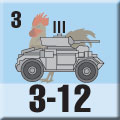 I’d pretty much finished with the design before I realized another real strength of an alternative-history setting: because you (as the designer) can craft the situation to your liking, it allows you (the designer) to more fully explore the game system. Alsace 1945 has a very fine system that’s pretty easy to use, and the 1940 variant shows that off to advantage with this example of la guerre foudroyant. It’s a fun little change of pace and I think “real wargamers” will like it quite a lot. I’d pretty much finished with the design before I realized another real strength of an alternative-history setting: because you (as the designer) can craft the situation to your liking, it allows you (the designer) to more fully explore the game system. Alsace 1945 has a very fine system that’s pretty easy to use, and the 1940 variant shows that off to advantage with this example of la guerre foudroyant. It’s a fun little change of pace and I think “real wargamers” will like it quite a lot.
Don’t wait to put Alsace 1940 on your game table! Join the Gold Club and find out how to add it to your collection!
You can order Alsace 1945 right here.
Sign up for our newsletter right here. Your info will never be sold or transferred; we'll just use it to update you on new games and new offers.
Mike Bennighof is president of Avalanche Press and holds a doctorate in history from Emory University. A Fulbright Scholar and NASA Journalist in Space finalist, he has published an unknowable number of books, games and articles on historical subjects.
He lives in Birmingham, Alabama with his wife, three children and his dog, Leopold. Leopold knows the number.
Want to keep Daily Content free of third-party ads? You can send us some love (and cash) through this link right here.
|
